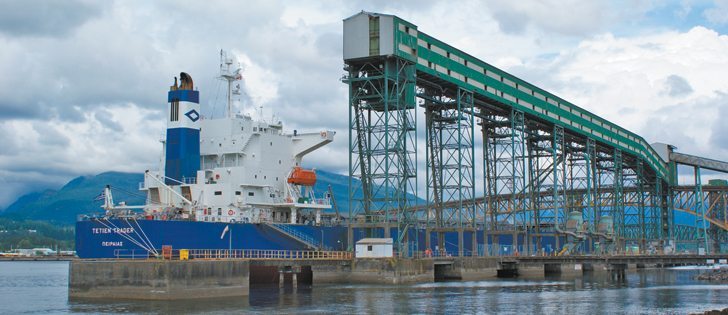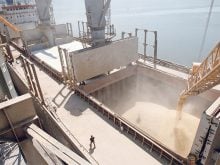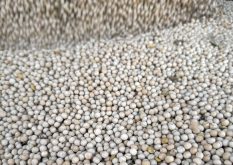Products more competitive | Canadian grain may find buyers in Asia, Africa and the Middle East
Ocean freight rates are extremely low right now, which is a big bonus for Canadian farmers because of the long distances between them and their markets.
The Baltic Dry Index, a measure of global shipping rates for dry bulk goods, reached a 26 year low in February and remained 72 percent below the five-year average as of mid-December, according to a Bloomberg story.
Builders started expanding the dry-bulk fleet five years ago in response to high freight rates.
Freight demand was far exceeding supply during that time of economic prosperity. The dry bulk fleet has increased by 44 percent since Jan. 1, 2010.
Read Also

Flax sector sees omega-3 opportunity
SASKATOON — A global shortage of omega-3 oils could be an opportunity for the flax sector, says an industry official….
The combination of new ships hitting the market and a slowdown in global trade because of slumping world economies has seen ocean freight rates plunge.
Bruce Burnett, CWB’s director of weather and market analysis, expects rates will remain depressed over the next five years, which is good news for Canadian farmers.
“That should help support prices as a structural factor over the next five years,” he said.
Low freight rates allow Canadian crops to reach markets they can’t service when shipping costs are high. They also make those products more price competitive in traditional markets.
A benchmark rate for shipping commodities from Vancouver to Asia is in the low $20s per tonne.
The long-term average for that benchmark rate is $28 to $30 per tonne, and it traded $10 to $15 per tonne above that during the highs of the freight market.
Burnett remembers how high ocean freight rates affected Canadian grain shipments five years ago.
“There were a number of customers where quite frankly it was not economical to ship to because of the high rates at the time,” he said.
Canadian grain and oilseeds were uncompetitive in parts of Asia, the Middle East, Africa and the Mediterranean.
Burnett said he believes rates have bottomed out, but how long they stay there will depend on how quickly old vessels are scrapped and if there is a sudden turnaround in the global economic situation.
Terry Barr, senior director of the knowledge exchange division for CoBank, told the recent DTN/Progressive Farmer Ag Summit 2012 that the world economy will be in the doldrums for another three to five years as key economies wrestle with crippling debt.
Many countries have significant debt-to-gross domestic product ratios. Bringing deficits under control will create a fiscal drag because every penny in increased taxes or decreased spending means less fiscal stimulus in those economies.
Barr said the European Union and the United States will experience minimal economic growth over the next three to five years, which will keep a lid on China’s growth.
That is bad news for grain and oilseed demand but good news for ocean freight rates.
















